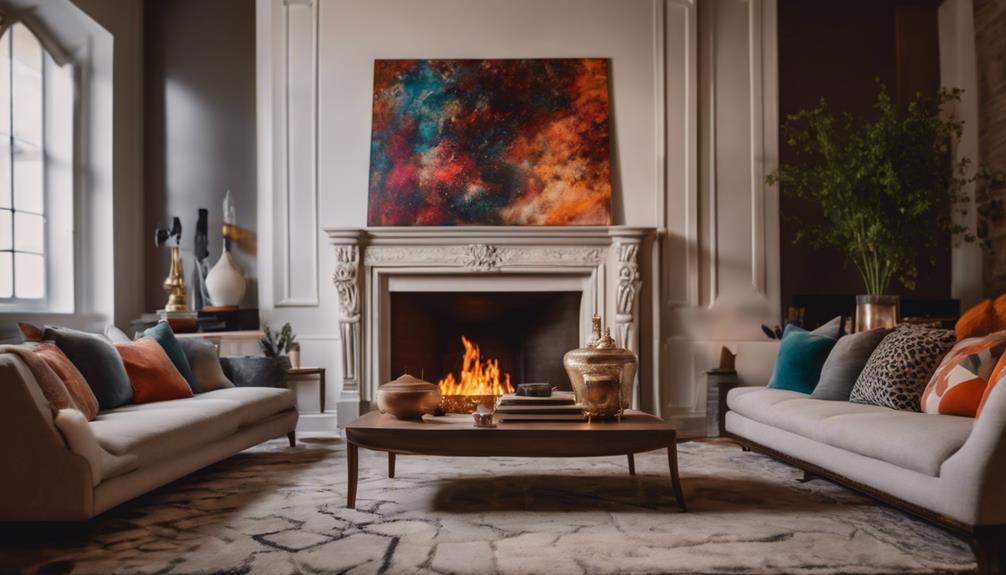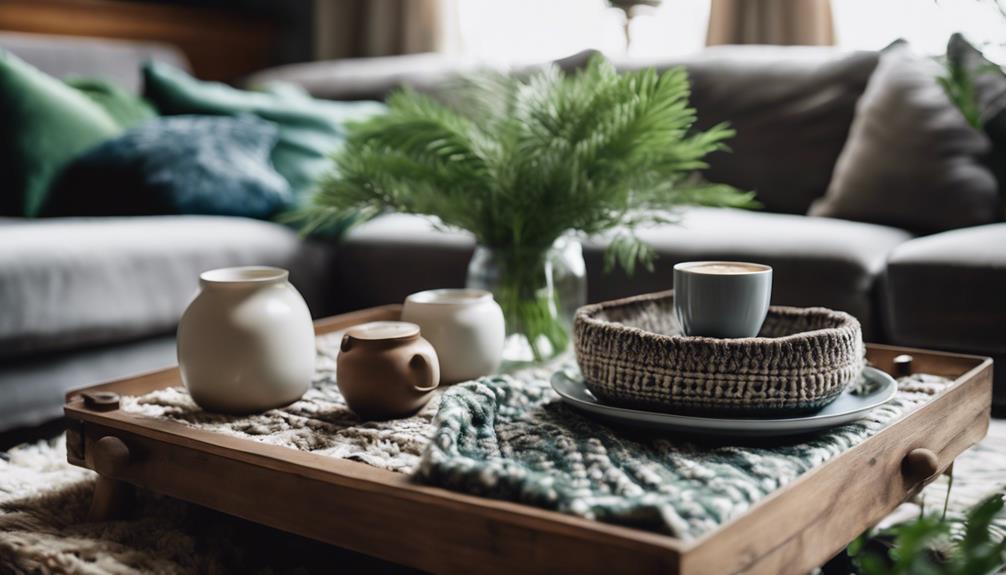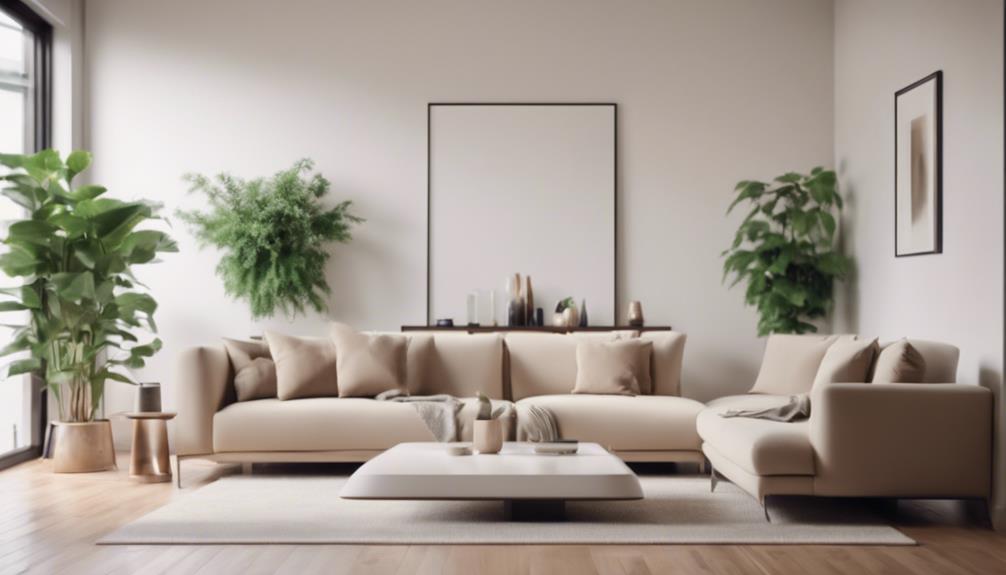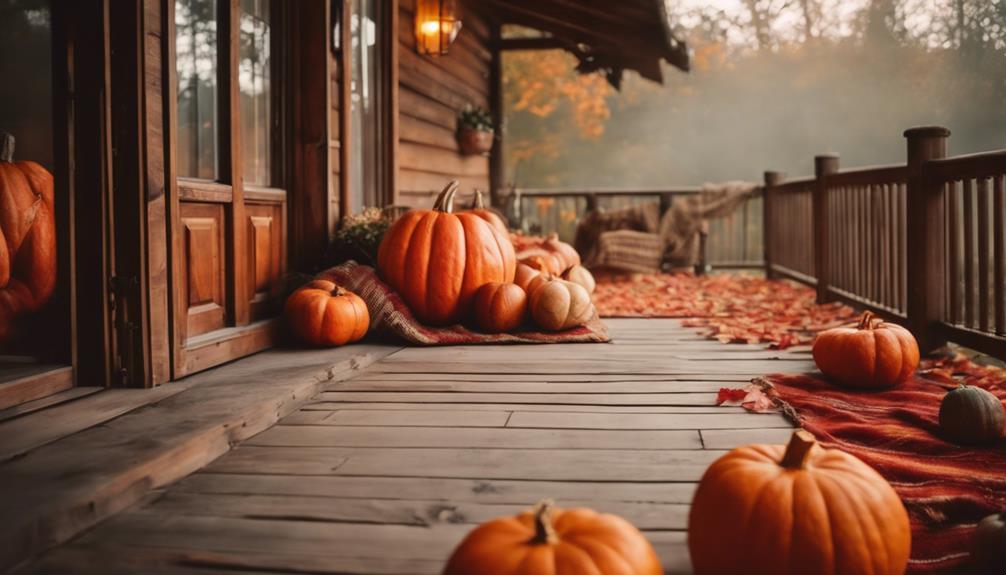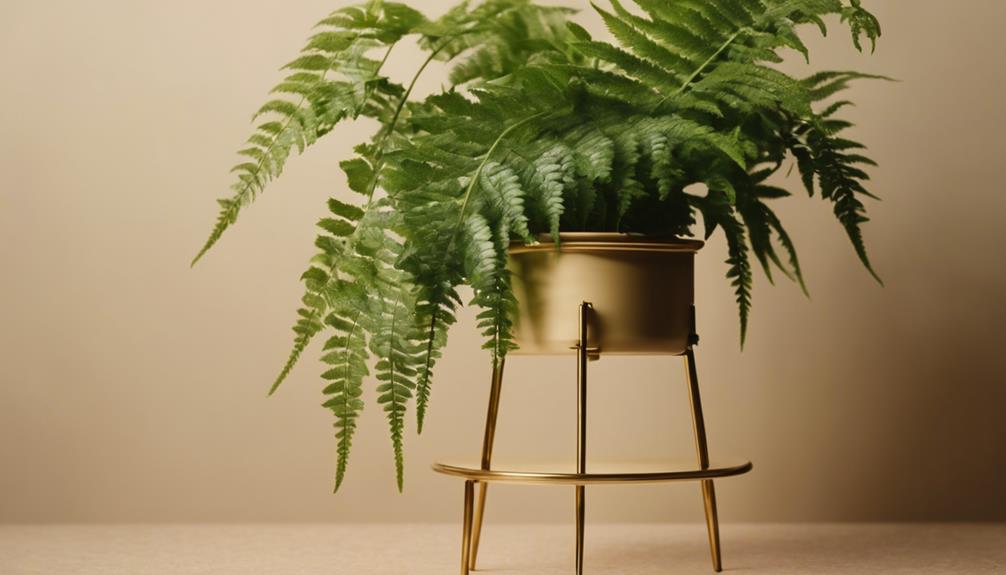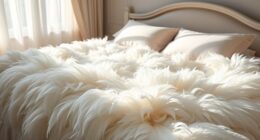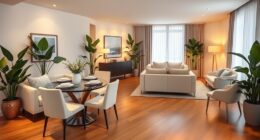The secret to blending modern and traditional decor lies in balance and intentionality. Start by selecting complementary pieces that enhance each other without clashing. Opt for neutral color palettes as a backdrop, accented by 2-4 colors to unify the space. Mix textures like sleek leather with rich fabrics, creating depth and warmth. Statement pieces, like oversized mirrors or unique antiques, serve as focal points that draw the eye. Don't shy away from innovative combinations and creative touches to express your style. Ready to explore more tips that can elevate your decor game and harmonize your space?
Key Takeaways
- Combine modern and traditional decor by selecting complementary pieces that enhance each other's aesthetic without clashing.
- Use neutral color palettes as a backdrop, incorporating 2-4 accent colors for cohesion across different styles.
- Mix textures and materials to create depth, such as pairing sleek leather with soft velvet or natural fibers.
- Incorporate statement pieces like oversized mirrors or unique antique furniture to bridge both styles effectively.
Understanding Decor Styles
To create a harmonious space, you need to understand the key differences between modern, traditional, and shifting decor styles.
Modern decor, which emerged in the mid-20th century, is known for its sleek lines and minimalist aesthetics. On the other hand, traditional decor draws inspiration from historical styles like Chippendale and Victorian, featuring ornate details and rich fabrics.
It's essential to highlight that contemporary decor reflects current trends and isn't the same as modern design.
When you explore mixing design styles, transitional furniture plays a significant role. This type of furniture blends elements from both traditional and modern design, helping you achieve a balanced look. By incorporating transitional pieces, you can soften the starkness of modern decor while still embracing the elegance of traditional styles.
Understanding decor styles allows you to make intentional choices when creating your space. It's not just about throwing together a few items; it's about finding synergy between the different elements.
Essential Techniques for Blending
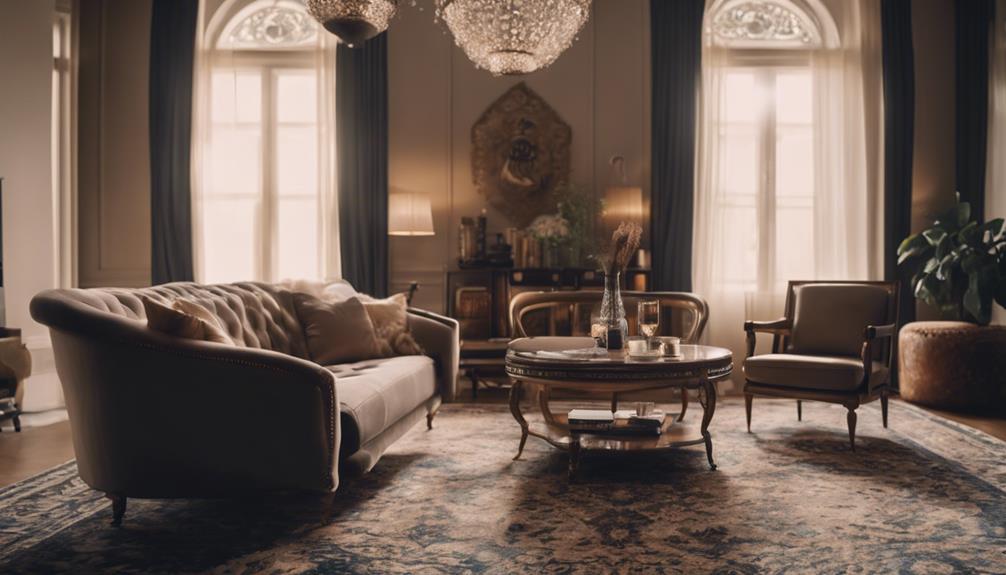
When blending modern and traditional decor, your choice of complementary pieces is essential.
Select furniture and decor that harmonize, ensuring they enhance each other rather than clash.
Additionally, integrating statement pieces can create a focal point that ties the two styles together seamlessly, making your space feel cohesive and intentional.
Complementary Piece Selection
Pairing a modern coffee table with traditional upholstered chairs can create a cohesive look that balances both styles beautifully. When selecting complementary pieces, focus on modern elements that enhance traditional design without overpowering it. A minimalist side table, for example, works well beside a classic sofa, providing functional accentuation while maintaining visual balance.
It's essential to steer clear of highly stylized modern furniture, as this can disrupt the harmony of your decor. Instead, opt for simpler designs that blend seamlessly with classic elements. Consider incorporating contemporary accent pieces, like a geometric lamp, which can inject a refreshing change into a traditionally styled room while preserving its charm.
Additionally, pay attention to the scale and proportions of your furnishings. Choosing pieces that share similar dimensions fosters an aesthetic balance, making the combination of modern and traditional styles feel intentional and cohesive.
Statement Piece Integration
Integrating statement pieces into your decor creates focal points that unify modern and traditional design elements, enhancing the overall aesthetic of your space. Start by selecting statement pieces that resonate with both styles, like unique antique furniture or contemporary art. These elements serve as focal points, drawing attention and establishing a cohesive narrative.
When you mix materials, such as pairing a sleek modern console table with traditional decor, you encourage character and depth in your design. Pay attention to scale and proportion; you want your statement items to harmonize with the surrounding decor without overwhelming it.
Strategically placing oversized mirrors can reflect both styles, adding depth and light while enhancing visual interest. Thoughtful placement of your statement pieces not only creates visual intrigue but also highlights the desired features of your room, effectively bridging the gap between modern and traditional styles.
Color Palettes That Work
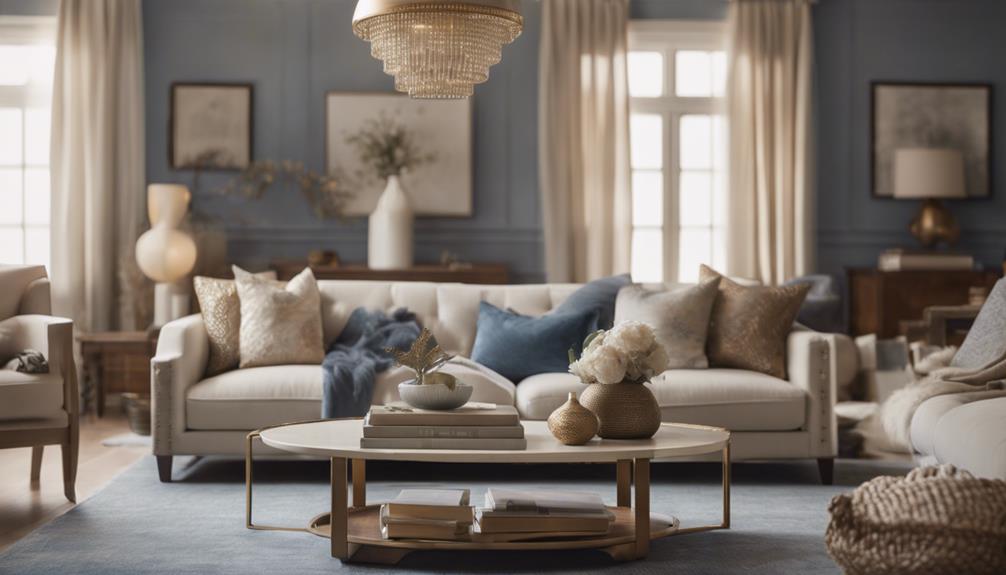
A neutral color palette, featuring shades of white, gray, and beige, creates an ideal backdrop for blending modern and traditional decor styles with ease. These neutral tones allow you to achieve versatility and visual balance, making it simpler to mix different aesthetics.
When choosing your color scheme, consider incorporating a limited palette of 2-4 accent colors. This approach not only unifies diverse furniture and decor elements but also fosters cohesion throughout your space.
Using modern color palettes, like grays and beiges, alongside traditional colors such as navy and burgundy, helps to bridge the gap between styles seamlessly.
To add visual interest, don't shy away from incorporating pops of color through accessories. Vibrant cushions or striking artwork can enhance the ambiance without disrupting harmony.
Textures and Materials Mix
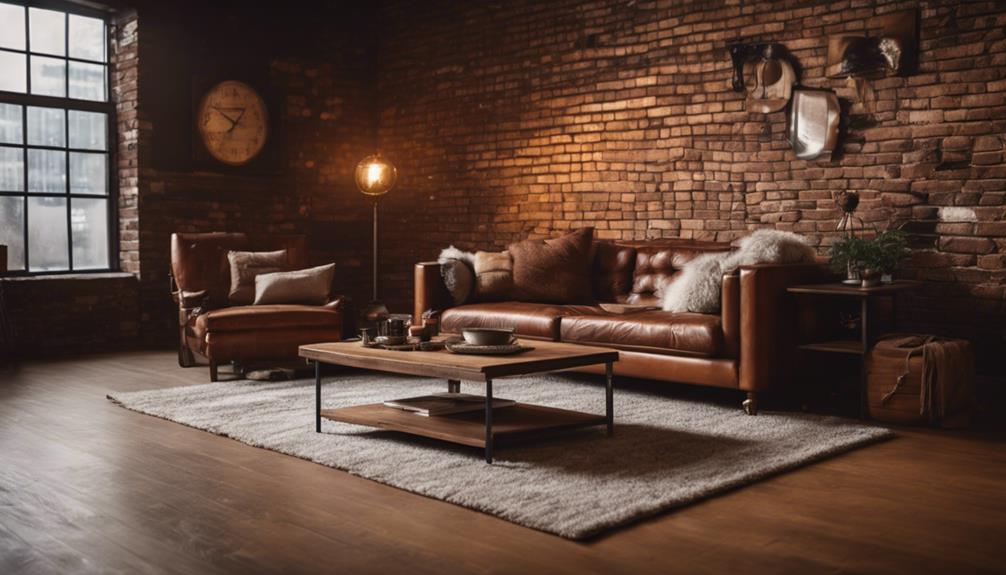
Mixing textures and materials not only enriches your decor but also bridges the gap between modern and traditional styles. By pairing sleek leather with soft velvet or natural fibers, you can add depth and visual interest to your space. Different types of wood, like reclaimed or distressed wood, alongside polished surfaces, enhance the uniqueness and character of your design.
Layering textiles is another effective way to create contrast. For instance, placing a traditional patterned rug under a minimalist coffee table unifies contrasting styles through tactile experience. Don't shy away from combining materials like glass, metal, and ceramic with classic fabrics; this showcases a successful fusion of modernity and tradition in your furniture and decor choices.
Experimenting with these textures invites a sense of warmth and comfort, essential for a harmonious living environment. Consider how each material interacts with light and shadow, transforming your space into a dynamic and inviting area.
When you embrace this mixing of textures and materials, you'll find that your decor not only tells a story but also feels cohesive, making your home a true reflection of your personal style.
Statement Pieces to Consider
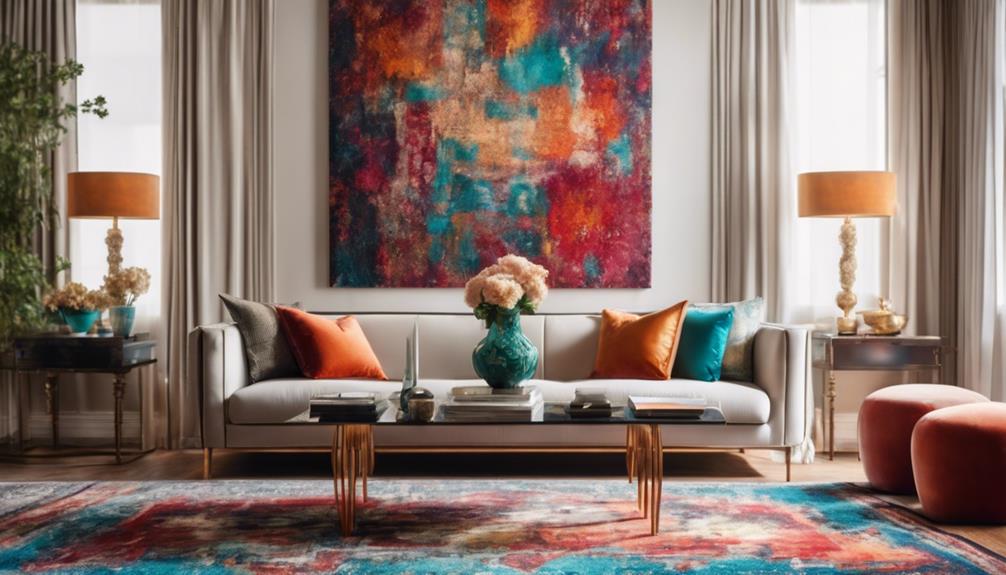
Statement pieces breathe life into your decor, seamlessly blending modern and traditional elements to create an enchanting focal point in your space. By selecting the right pieces, you can enhance visual interest and unify your design.
Here are five statement pieces to evaluate:
- Oversized Mirrors: They reflect both modern and traditional elements, making your space feel larger and more cohesive.
- Unique Antique Furniture: Items like a vintage sideboard or classic armchair can add historical depth and character to contemporary settings.
- Contemporary Art: Striking art pieces in traditionally styled rooms can inject fresh, modern energy that contrasts beautifully with traditional decor.
- Layered Textiles: A bold, modern rug paired with traditional floral prints creates a dynamic blend that bridges design styles elegantly.
Incorporating these statement pieces will help you achieve a harmonious balance between modern elements and traditional pieces, ensuring your space feels both inviting and stylish.
Architectural Influences on Design
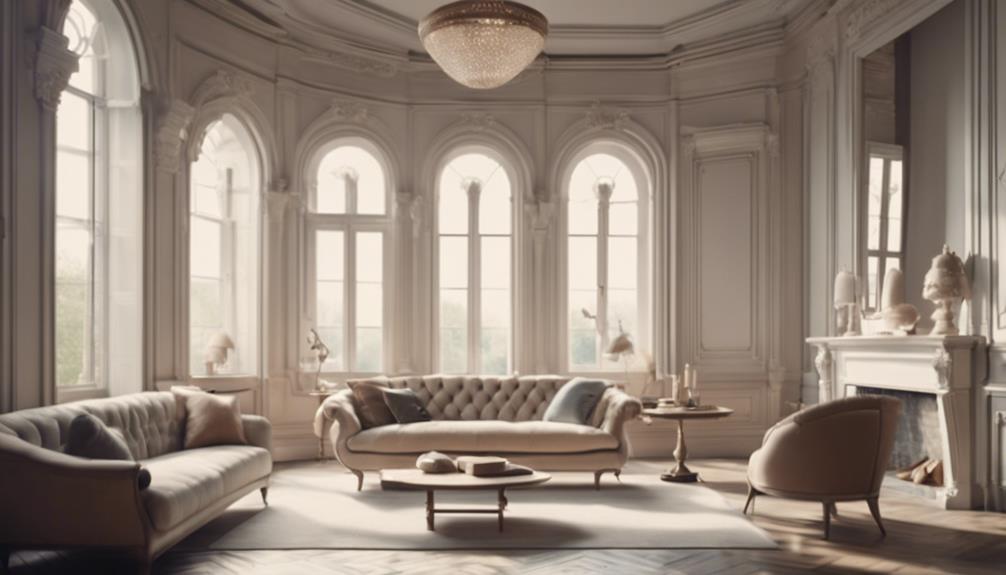
Architectural features, such as high ceilings and intricate moldings, shape your decor choices by guiding you toward a balanced blend of modern and traditional styles. When you're working with ornate architecture, consider incorporating a modern aesthetic that complements traditional accents. This approach creates a harmonious fusion that respects the room's history while embracing contemporary design.
The context of the room is essential; it determines how effectively you can mix these styles. For instance, in a Victorian-style room, a mid-century modern piece may feel out of place unless it's thoughtfully paired with traditional elements. You want your selections to enhance the architectural features rather than clash with them.
In mainly modern spaces, don't shy away from eclectic touches. Incorporating traditional accents can maintain visual interest and prevent the room from feeling sterile or overly minimalist.
Sourcing Unique Decor Items
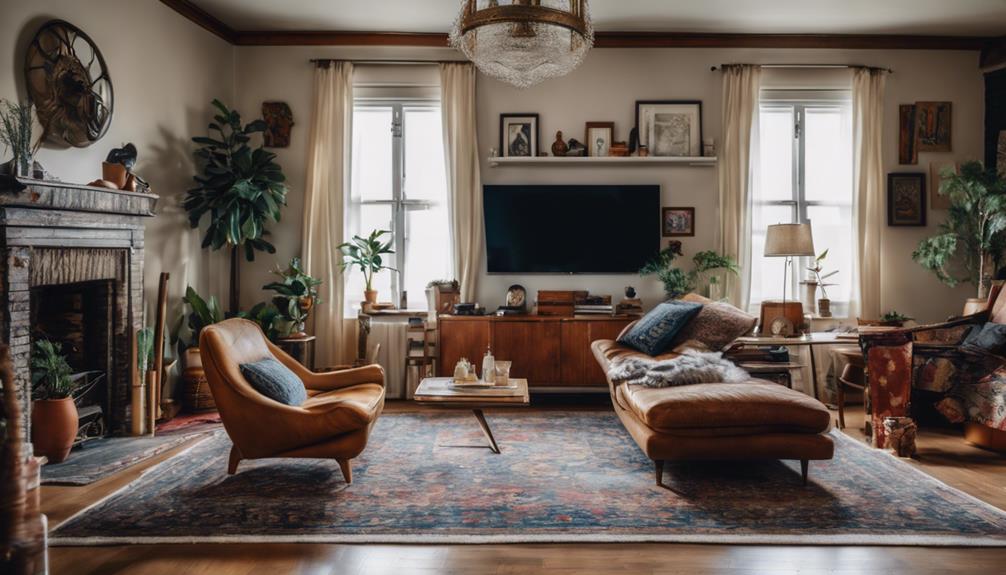
How can you find unique decor items that seamlessly blend modern and traditional styles?
Sourcing unique decor items is essential for creating a space that reflects your personal style. By integrating modern and traditional elements, you can achieve a harmonious look that stands out.
Here are some effective ways to discover decor treasures:
- Visit local antique shops and flea markets for vintage pieces that add character.
- Explore online marketplaces like Etsy and eBay for handcrafted items that showcase both styles.
- Shop at curated retailers such as Anthropologie and West Elm, which offer a balanced mix of contemporary and classic designs.
- Attend estate sales and auctions to find rare decor treasures with historical significance.
Tips for Creating Balance
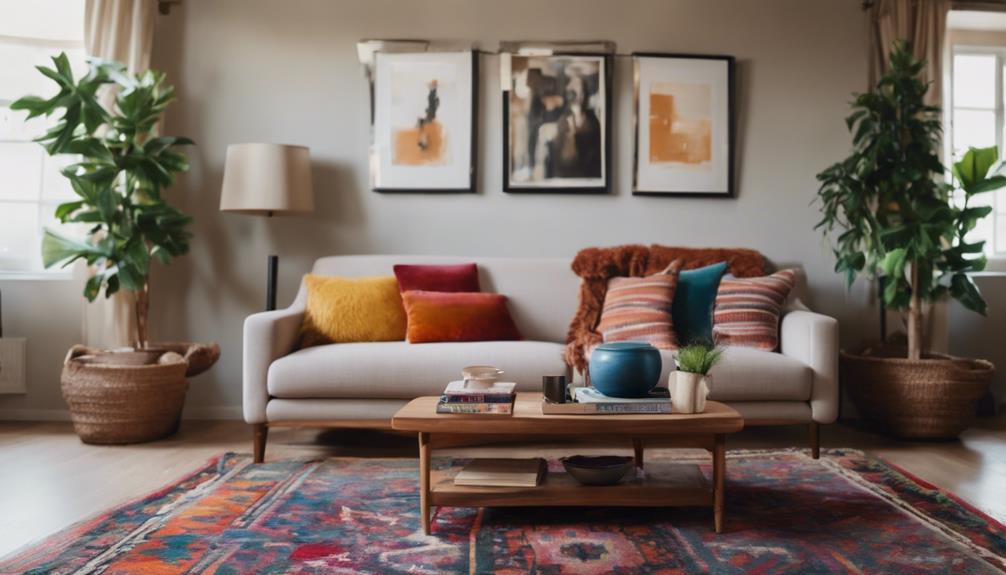
Creating balance in your decor starts with a symmetrical furniture arrangement that anchors the room.
You'll want to mix varying heights and textures to add visual interest while incorporating negative space to keep the area feeling open and inviting.
Symmetrical Furniture Arrangement
To achieve a balanced and harmonious space, you can arrange your furniture symmetrically by placing matching pieces opposite each other. This symmetrical furniture arrangement not only enhances your room's aesthetic appeal but also creates a visually stable environment. When you pair heavier furniture with equally substantial counterparts, you maintain visual stability and avoid clutter.
Here are some tips for creating balance in your space:
- Choose neutral colors for larger pieces to create a visually calming effect.
- Position furniture around a central focal point, like a fireplace or artwork, to enhance symmetry.
- Incorporate negative space between pieces to reduce visual clutter.
- Use matching accessories on each side to reinforce the symmetrical look.
Varying Heights and Textures
Incorporating varying heights and textures in your decor not only adds visual interest but also enhances the overall balance of your space. By mixing and matching different furniture pieces, you create a dynamic environment that engages the eye. For instance, pair a tall bookcase with a low sofa to establish a sense of proportion. This contrast draws attention and encourages exploration within the room.
Textures play an essential role, too. Combining a sleek leather chair with a cozy woven throw adds depth and warmth. This variety in materials not only feels inviting but also highlights the unique characteristics of each piece.
To achieve balance, place heavier items, like a solid wood table, alongside lighter accents such as glass vases or metal decor. This strategic arrangement prevents your space from feeling top-heavy or cluttered.
Remember to mix different materials—wood, metal, and fabric work well together—while maintaining a cohesive look. Emphasizing varying heights and textures will transform your decor, making it more visually appealing and harmoniously balanced.
Incorporate Negative Space
Negative space plays an essential role in achieving balance, allowing modern and traditional decor elements to coexist harmoniously without overwhelming your space. By incorporating negative space effectively, you'll create visual breathing room that enhances the overall design.
Here are some tips to help you make the most of negative space:
- Choose lighter furnishings: Balance heavy traditional pieces with lighter modern items to create harmony.
- Leave open areas: Designate sections of your room that remain uncluttered, allowing for a smoother flow.
- Highlight focal points: Use negative space to draw attention to key furniture or architectural features.
- Mix textures thoughtfully: Give each material room to shine by avoiding overcrowding and reducing visual noise.
Embracing Creative Freedom
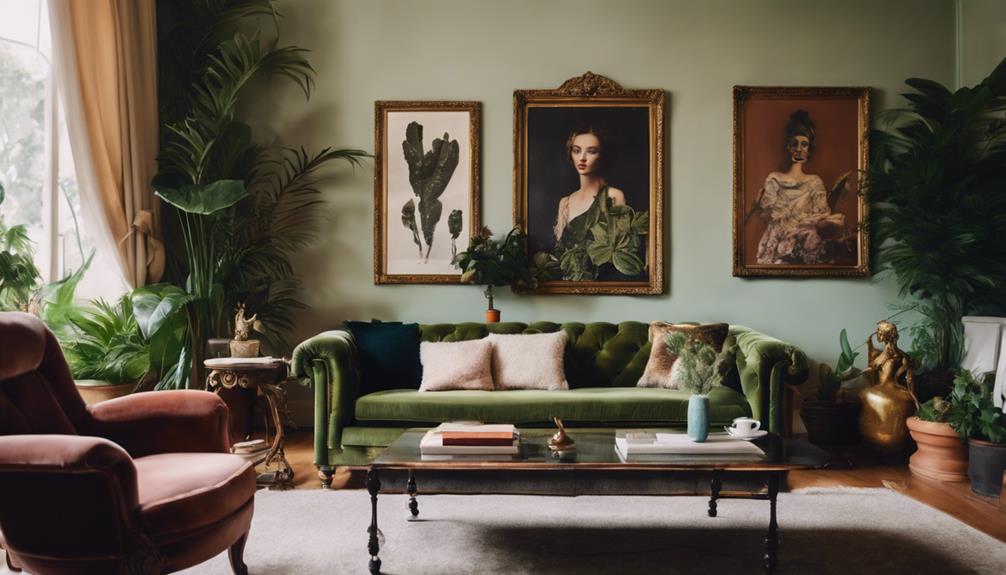
Embracing creative freedom in your decor lets you blend modern and traditional styles, allowing for a unique expression of your personal taste. You don't have to strictly adhere to established rules; instead, you can mix elements that resonate with you. This principle encourages you to explore unexpected combinations, which often leads to innovative and visually striking environments.
When you allow for creative freedom in your design choices, your space reflects your personality rather than conforming to conventional standards. Forget the idea that mismatched pieces can't coexist; breaking design rules can transform them into enchanting focal points, adding character and introducing a 'wow' factor that makes the space truly yours.
The ultimate goal is to create inviting spaces that resonate with enjoyment and comfort. So, don't be afraid to experiment with patterns, textures, and colors that might seem unconventional. By embracing this creative freedom, you can curate a home that seamlessly blends modern elegance with traditional charm, resulting in a decor style that's distinctly you.
Enjoy the process, and let your imagination guide you to a beautiful balance between the old and the new.
Frequently Asked Questions
How to Blend Traditional and Modern Decor?
To blend traditional and modern decor, prioritize a neutral palette, choose furniture with clean lines, mix textures, update patterns with fresh colors, and incorporate unique accent pieces that unify your space's aesthetic.
How Do You Transition From Traditional to Modern Decor?
Did you know that 60% of homeowners prefer a mix of styles? To shift from traditional to modern decor, focus on a neutral palette, blend clean lines, and introduce contemporary textures while keeping some classic elements for balance.
How to Mix Traditional and Modern Art?
To mix traditional and modern art, choose a neutral backdrop, incorporate contemporary pieces as focal points, and use frames that blend styles. Balance your selection and place them thoughtfully for a cohesive, eclectic display.
How to Mix Old and New Interior Design?
Did you know that 80% of successful interior designs blend styles? To mix old and new interior design, choose a primary style, layer textures, and incorporate statement pieces for a cohesive and visually appealing space.
Conclusion
In blending modern and traditional decor, you're not just decorating; you're crafting a narrative that whispers stories of the past while embracing the present.
By mixing styles, you create a space that feels both familiar and fresh, inviting warmth and intrigue.
Remember, it's about striking that perfect balance, allowing each piece to shine in harmony.
So, go ahead, let your creativity flow and transform your home into a delightful conversation between eras!
